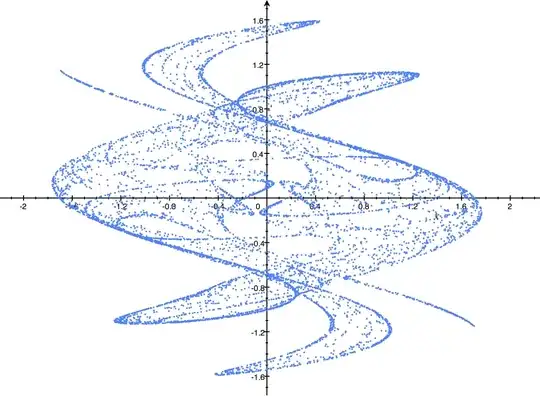My question is focused on the King's Dream fractal, which can be defined as follows (nice pictures can be found here) : $$ \Omega = \{f^n(0.1,0.1) \;\vert\; n \in \mathbb N \} \quad f(x,y)=(\sin(ax)+b\sin(ay),\sin(cx)+d \sin(cy))$$ where $-3 < a,c < 3$ and $-0.5<b,d<1.5$ are given.
Then, I was wondering if $K=\overline \Omega$ is symmetric w.r.t. $(0,0)$, i.e. $(x,y) \in K \implies (-x,-y)\in K$ (at least for some values of $a,b,c$ and $d$, e.g. those given below).
I don't think that $\Omega$ itself is symmetric w.r.t $(0,0)$. Looking at the picture below, it seems that it could be the case for $K$, but it doesn't appear obvious when looking at the definition of $f$.
I was also wondering whether $K$ is connected. If these properties hold, I don't know how this could be proved...
Here is a picture of $\{f^n(0.1,0.1) \;\vert\; 0 \leq n \leq N = 9000 \}$ for $$a=2.879879,b=−0.765145,c=−0.966918,d=0.744728.$$

Thank you in advance for your answers !